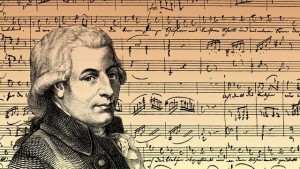Magnificent Mozart

This evening, Gravesham Choral Society and orchestra are delighted to present two of Mozart’s highly acclaimed works. We will be joined by soloists:
Soprano Emily Jennings
Soprano Helen Lacey
Tenor Alexander MacLaren
Bass Adam Jarman
Symphony No 41 “Jupiter”
Symphony No. 41 in C Major, often believed to be one of the finest classical symphonies, is the last of a set of three Mozart composed in rapid succession during the summer of 1788. Just three years later, he sadly died and it is not known if it was ever performed in his lifetime.
In four movements, it’s scored for one flute, and pairs of oboes, bassoons, horns and trumpets, with timpani and a full string section.
Great Mass in C Minor
The Great Mass, composed around 1783, is a glorious large-scale masterpiece. Writing to his father (who was not at all enamoured of Mozart’s union with Constanze Weber), Mozart referred to his earlier vow to write a mass. He planned to return to Salzburg to introduce Constanze to his family, but it seems he also wanted to showcase her musical talents. When the mass premiered in Salzburg, under Mozart’s direction, it is believed Constanze was one of the two soprano soloists.
No one really knows why it’s an unfinished setting. The Agnus Dei is missing, only two Credo movements survive, and the Sanctus and Benedictus are partly lost but were subsequently reconstructed by various editors. Nevertheless, scored for four soloists, double chorus and full orchestra, it is considered one of Mozart’s finest works.
It was much admired by scientist, pianist and accomplished violinist, Albert Einstein, who declared: “I get most joy in life out of music.”
Church Street
Gravesend
Kent
DA11 0DJ

